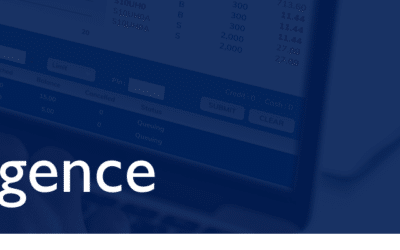In 1789, having contributed to the US Constitution, founding father Benjamin Franklin is famously quoted as penning: “in this world nothing can be said to be certain except death and taxes.”
Millenia prior, on the other side of the ‘pond’, Greek philosopher Heraclitus coined the phrase: “the only constant in life is change.”
Death and taxes aside, the notion that change is constant is certainly true in the business world, particularly across the Australian corporate landscape.
Cast your mind back to the pre-GFC period in 2007/08: you’ll recall significant micro– and macroeconomic issues at play that preceded the credit crunch and foreshadowed the sub-prime mortgage crisis in the US, which spread like contagion through global financial markets, literally pushing the entire financial system to the brink of collapse.
As we now know, the US government bailouts combined with the respective economic stimuli instilled by multiple nations accelerated ever-growing global debt levels and helped navigate through the ‘Great Recession’; the most severe economic and financial meltdown since the Great Depression.
Fast forward to 2019, specifically the end of Q1FY20, and a plethora of macroeconomic red flags appear on the global pitch: Trump-China trade wars, Boris-led Brexit from the Euro, Hong Kong tensions, Germany poised for recession, flailing monetary policy levers failing to have the desired impact on the world’s economies etc.
In August, the local bourse suffered its biggest one-day loss since 2018 (circa $60 billion), followed by another dire trading period at the start of October when more than $70 billion was wiped off in two days.
However, the astute observer will see the green shoots of opportunity – not just bargain buying on equities markets but further afield, as Prime Minister Scott Morrison recently cited:
“We’re going to have to get used to this for a while, this level of tension, and we’ve got to accommodate that, we’ve got to absorb it, we’ve got to see the opportunities in it, of which there are many.”
While the PM continues to pump up Australia’s economic tyres, POTUS Donald Trump dismisses the prospect of a recession in the world’s largest economy, despite bond yield curves inverting mid-August when (long-term) 10-year US government bond interest rates dropped below (short-term) 2-year rates, providing perhaps the greatest indication of an impending recession in the US.
Since that time, economic growth in the US has moderated only slightly, in line with economists’ expectations that growth will weaken in the next couple of years without actually contracting, although some forecasters suspect a deeper correction is coming.
Australia’s small open ‘follower’ economy status means it is closely hinged to others, especially the US and China.
In August, respected local economists and analysts, including AMP Capital chief economist Dr Shane Oliver, dismissed the correlation between Australia’s then inverted yield curve predicting a recession in Australia (when the official cash rate was at 1%, above the 10-year bond yield at 0.91%).
The reason: no fewer than five false readings predicting a recession in Australia over the last three decades, despite sailing very close to the two consecutive quarters of negative GDP growth required for definitional recession.
The RBA has taken drastic action in recent months, cutting the official cash rate three times since June to an historic low of 0.75%, effectively quashing this indicator of an impending recession.
But Dr Oliver admits the approaching inversion between 10-year bond and 2-year bond yields in Australia could lead to another sell off here on the local market, potentially in the coming weeks, albeit not necessarily indicative of an impending local recession.
A relevant anecdote Dr Oliver conveyed to me on the sidelines of a conference in Perth circa 2009, recounting his then recent trip to Greece with his wife.
Around the time Greece’s debt levels were 140% of GDP, he visited a local taverna and enjoyed a lovely seafood dinner. Afterwards, an enterprising young man went table to table offering dental floss for sale.
Interestingly, he offered both types of floss to the restaurant patrons: new and used.
While Shane politely declined, the somewhat unsavoury tale speaks of ingenuity and opportunity in the face of adversity.
Roman philosopher Seneca is quoted as saying: “luck is where opportunity meets preparation”.
Personally, I’ve always liked the five P’s: prior preparation prevents poor performance.
It certainly pays to prepare and there is potential for a handsome reward if that preparation means you can take advantage of the opportunities that challenging economic conditions and/or fluctuating markets present.
Facebook’s Mark Zuckerberg believes: “in a world that’s changing really quickly, the only strategy that is guaranteed to fail is not taking risks.”
Risks may be worth taking, or at the very least considering, with the support and counsel of appropriate advisors.
With reporting season for FY19 fading into a distant memory and AGMs in full swing, questions face leaders of all organisations right across the calendar and financial year; some harder or harsher than others.
Will you and your business be prepared to take advantage of the opportunities you’re presented with or that the market affords?


